
Best Places to find tigers in India
If you have seen a tiger in the wild, then you already know how exciting it is and if you have not, then it is time you did.😃
Tigers are arguably, one of the most beautiful animals on the earth. As I tell everyone (whoever is ready to listen) that – if God exists (I happen to be agnostic) and created all the life on earth, then probably God stopped after creating the tiger as nothing could surpass the beauty, grace and swagger of a tiger.
The Bengal tiger, also known as the Royal Bengal Tiger or the Indian tiger, is the subspecies with the largest population. It is the national animal of India. India is now home to over 70% of the Tiger population in the world and perhaps the only place where you can see tigers in the wild.
Tigers in India are mostly found inhabiting six different forested landscapes—Shivalik Hills and the Gangetic plains, Central India, Eastern Ghats, Western Ghats, North-eastern Hills and Brahmaputra plains, and Sundarbans—with different topographical features.
Now, that you are ready to start planning for your next vacation, I have listed the places where you have the best chances to see a tiger.
Ranthambhore National Park
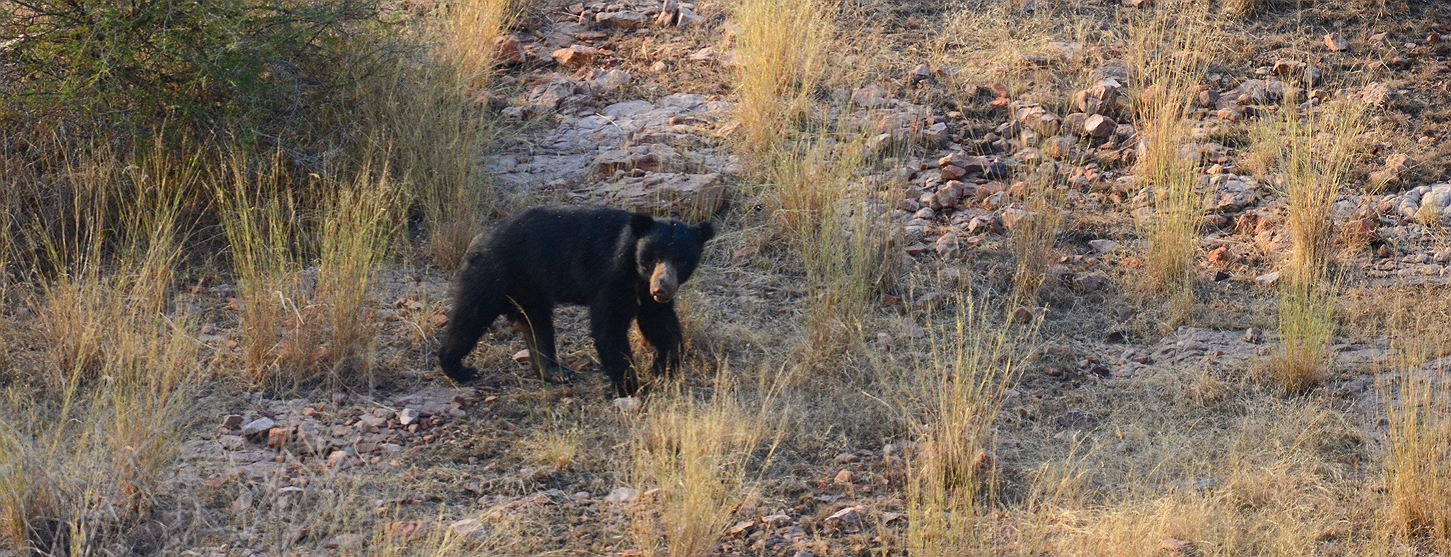
Ranthambhore is a unique place. Here, wildlife and history lie perfectly entwined. Wild tigers roam the ruins of the still imposing Ranthambhore fort.
The Park derives its name from Ranthambhore Fort (which in turn have been taken from the conjunction of the name of the two hills Rann & Thambhore) which sit on a hill within the park. The fort was recently included in the UNESCO heritage list and is one of the oldest in Rajasthan.
The nature of the forest (dry deciduous) makes it comparatively easier to spot tigers from afar and have made the tigers probably less shy of the safari vehicles.
The backdrop of the fort, beautiful lakes and the rugged beauty of the Aravali hills make this area the best place to photograph tigers in their wild, natural habitat.
Some of the tigers have names – Chenghis, Bambooram, Jhumru, Machali - and have become legends in their lifetime.
The vegetation in the park is of a dry deciduous type. Characterised by rocky plains with gentle slopes, flat hill tops (locally known as 'Dang') and precipitous cliffs covered by a dry decidous forest, the landscape is dotted with old banyan trees, dhok trees, Flame of the forest, mango and in some areas evergreen blackberry trees. There are many water bodies located all over the park, which provide relief to the animals during the extremely hot summer months.
The last legal tiger hunt happened in Ranthambhore:
In 1960, the Maharaja of Jaipur invited Her Majesty Queen Elizabeth II and her husband, His Royal Highness the Duke of Edinburgh, for a royal Shikar (=hunting party). Despite opposition in India as well as UK, the hunt went ahead with lavish preparations . Two hundred beaters '"worked" a pair of tigers into a clearing near the Duke's "machan", a raised wooden tower, from where he killed the 8ft 9in creature with a shot to the head. That became the last legal hunt in India.
Other Attractions: Leopards, sloth bear, birds in winter months.
Park open : October – June ( some zones remain open through the year).
Jim Corbett National Park
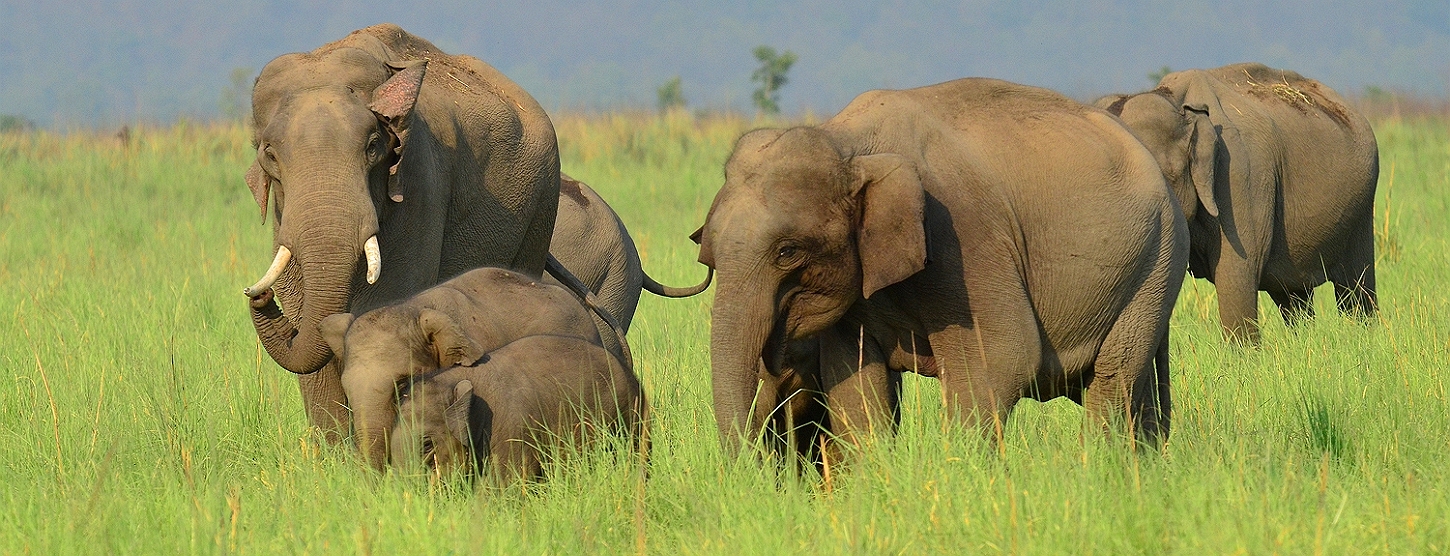
Jim Corbett National Park is known as the “land of roar and trumpet”; the best place in India to see two of the countries’ most famous mega faunas – Royal Bengal Tigers and Asiatic Elephants in an abode of spectacular scenic beauty.
Corbett has landscapes that have few parallels anywhere in India. Dhikala’s vast grasslands, the wide riverbed of Ramaganga and the tall Sal trees never fail to mesmerize. The grasslands are favoured by elephants and deer and provide shelter to many grassland birds like partridges. The presence of deer attracts tigers; hence, they are the best places to look for tigers.
The topography is varied with hilly areas, riverine habitat, marshes, deep ravines and flat plateau land . Extensive forests of Sal cover almost 73% of the park in the lower hills and valleys. The Ramganga river enters from the northeast and flows through most of the park till it forms the Kalagarh reservoir created by a multipurpose
Jim Corbett
Jim Corbett, the hunter turned conservationist was instrumental in the establishment of “Corbett National Park” which was formerly known as the “Hailey National Park”. In 1955 this area was initially renamed “Ramganga National Park”. Later that year, after Jim’s demise, the park was re-established as the “Corbett National Park” we see today.
The Corbett Tiger Reserve boasts the distinction of the chosen venue for the inauguration of ‘Project Tiger’ in India.
Other Attractions : Elephants, Otters, Leopards, Gharial, Birding
Park open : November - May
Tadoba National park
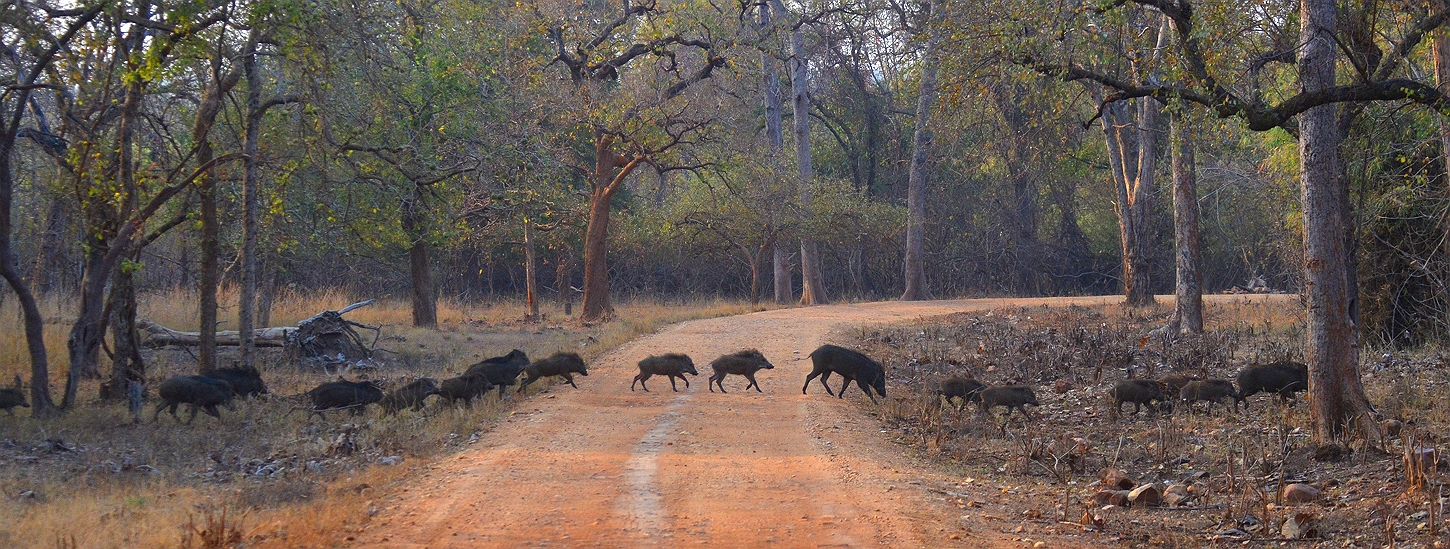
In recent years Tadoba-Anadhari has emerged as one of the best tiger reserves in the country boasting a healthy population of tigers. The park derives its name from "Taru" the local deity of the Gond tribe community and the Andhari River that flows through the forest
Called the “Jewel of Vidharva”, and rightly so, the beautiful park, located in the Chandrapur district of Maharashtra is home to a wide variety of animals like tigers, leopards, sloth bears, hyaenas, jackals, wild dogs, blue bulls and sambar.
The lush, southern tropical, dry deciduous forest features a beautiful lake at the centre and comprises mainly of teak trees, bamboo thickets and the ubiquitous “Mahua”, with its distinctive intoxicating smell that wafts through the forest when the golden grapelike fruit ripens in summer attracting the sloth bears. Mahua is also fermented for a potent brew, a favourite of the locals.
Palas or Flame of the Forest decorates the forest in vibrant colour. The vast Tadoba lake in the middle of the sanctuary is a beautiful sight. Deer and sambhar throng the banks, unmindful of the huge crocodiles waiting for an opportunity. This lake is a perennial water source that the area depends upon, especially during the dry summer months.
Other attractions : Leopards, Dhole (Wild Dogs), Sloth Bear, Gaur (Indian Bison),
Park open : October – June
Bandhavgarh National Park
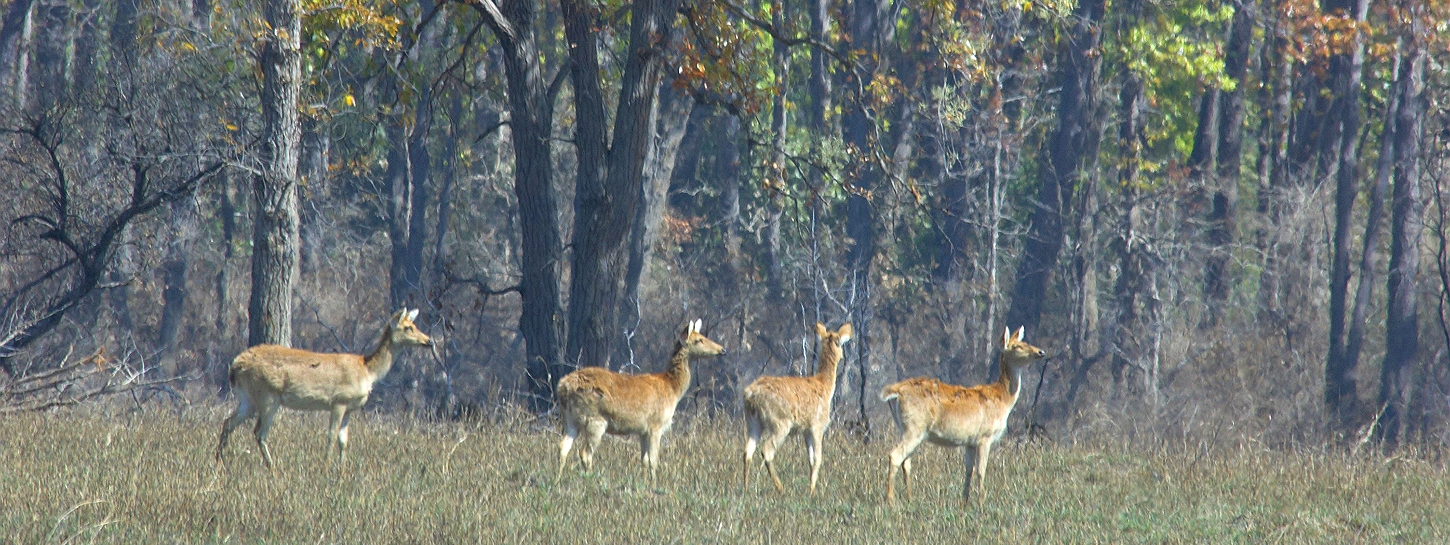
Bandhavgarh, the land of the tiger, is a magical forest steeped in ancient history of the Chandela and Rewa dynasties that exude an aura of mystery and mystical charm.
The density of the tiger population at Bandhavgarh (8 tigers per square km) is one of the highest known in India.
Bandhavgarh National Park comprises of many small hills of the Vindhya range, separated by gently sloping valleys. These valleys end in small, swampy meadows, locally known as 'Bohera', Sal forests, bamboo groves and grasslands. Three perennial streams meandering through the forests offer a lifeline to the animals during the summer months. Naturally the wildlife is more frequently found near these water sources during the dry months.
The central portion of the park consists of hills, marshes and grasslands and a few water sources and supports a large number of herbivores - is the main wildlife sighting area. The safari tracks run mainly through the open grasslands where the tigers are frequently sighted hunting.
Some of the tigers of Bandhavgarh have become legends in their lifetime and have been propelled to international fame by wild life film makers. The legendary Badka, Lakshmi, Sita, Charger and B2 all are known names across the world to wildlife lovers.
Looming high over the entire park and located in the heart of its core area at an elevation of 800m, is the impressive Bandhavgarh fort built on a virtually unassailable area. The fort, enclosing an area of 560 acres, stands at a height of 800m, is surrounded by forest and is an spectacular sight.
White Tigers of Bandhavgarh
There has been historical records of white tigers ( albino ) being spotted on multiple occasions in Bandhavgarh in early 20th century. In 1951, Maharaja Martand Singh of Rewa captured a white tiger cub and and named him ‘Mohan’. Martand Singh was also able to breed white tigers export the cubs to other countries. Today, all white tigers in captivity all over the world are Mohan’s descendants.
Park open : October – June
Kanha National Park
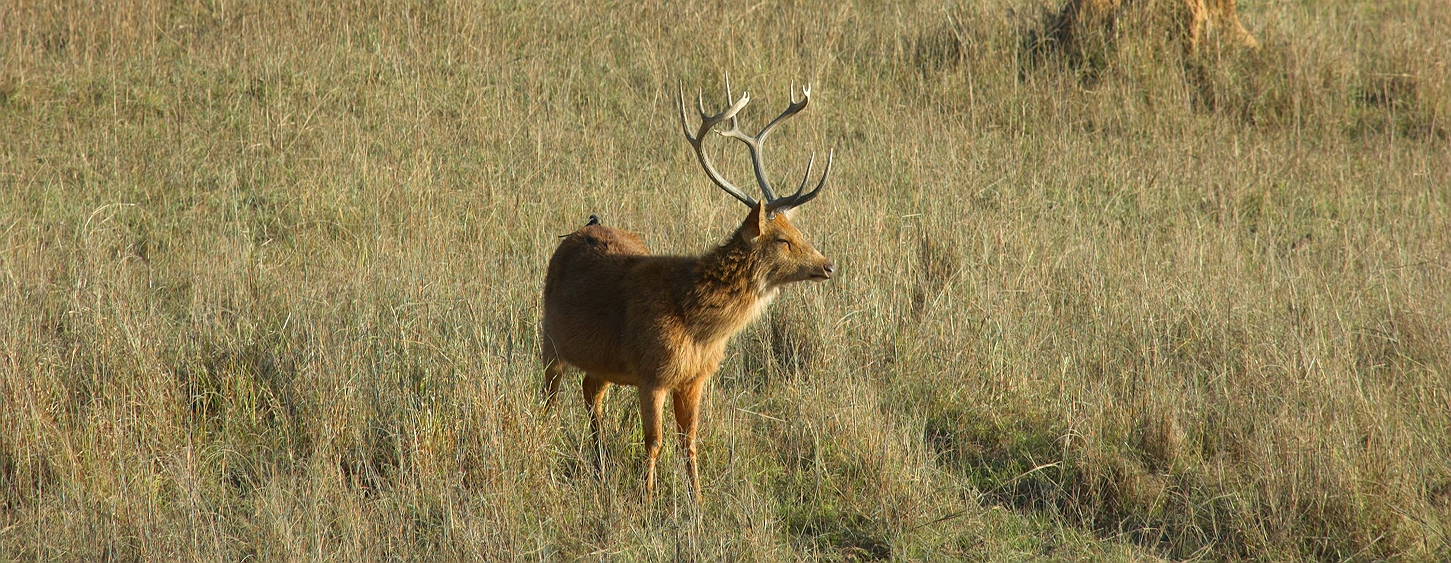
One of the most beautiful jewels adorning the wild wonders of Central India, Kanha National Park in Madhya Pradesh takes your breath away by its sheer beauty.
In the months of winter, and in the glow of dawning sunlight, the forest emerges slowly out of the orange tinted mist. An endless meadow that rolls into green hillocks and thickets of evergreen Sal, Pipal and banyan trees stretches into the horizon. As the sun emerges slowly, the magical forest comes to life with cheerful birdsong, Langurs swinging from tree to tree, deer herds strolling onto the meadows nibbling on grass and carefully checking for predators, peacocks quacking and wild boars hurrying around with babies in search for food. The trees, sounds and views merge into a natural symphony every day.
Home to about a tenth of India’s tiger population, the Kanha National Park in Madhya Pradesh was formed in 1955 primarily to save the Hardground Barasingha; the fawn-coloured deer is found in India only, and after careful conservation, its numbers have been increased to 400.
Kanha is a horseshoe formed valley enclosed by the Satpura Mountains. The Banjar and Halon Valley forests surrounded by densely forested hills form the two distinct western and eastern parts of Kanha. The famous meadows of grassland of Kanha are surrounded by lush Sal forests punctuated by bamboo thickets and a few perennial water streams that feed the waterholes.
Tiger Study by George Schaller
George Schallar, considered one of the finest field biologists in the world, undertook the first scientific study of the tigers in India at Kanha on his first visit to the country in 1963, revolutionised wildlife research in India.
Schaller’s book “The Deer and the Tiger” was an outcome of his study in the Kanha National Park and still remains the reference point for all further studies of tigers.
Other attractions : Swamp Deer, Gaur (Indian Bison), Dhole (Wild Dogs)
Park open : October – June
Pench National Park
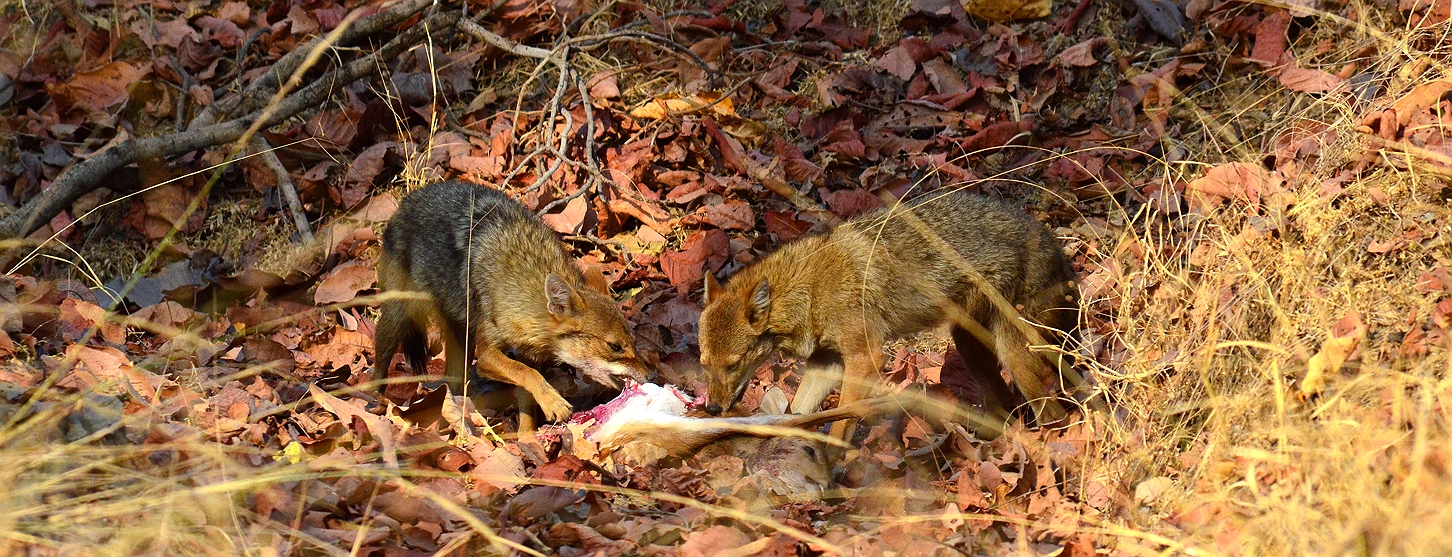
Pench National Park is located on the boundary of Seoni and Chhindwara districts of Madhya Pradesh, close to Maharashtra's northern border. The reserve lies in the forest belt that extends to Balaghat in the east and Nagpur district to the south. The park is named after the Pench river and is contiguous with the forest on the southern side in Maharashtra. It is the panoramic beauty of this region that has been described as early as the beginning of the 20th century by naturalists like Captain J. Forsyth in 'Highlands of Central India' and is the setting of Rudyard Kipling's The Jungle Book.
The deciduous Pench Forest is filled with many tall trees and among them the pale white ghost trees. For six months every year, the ghost trees go dormant, lose their chlorophyll and shed their bark. Their pinkish white appearance has earned them the local name bhootiya in the Marathi language, which means ghostly. It’s also known as a karaya or kulu tree.
Land of the Jungle Book
In 1831 Lieutenant Strendale Moor witnessed a human child nurtured by the wolves in the forests around Sepnee which was later recorded in Sir William Henry Sleeman's pamphlet, 'An Account of Wolves Nurturing Children in Their Dens' which describes a wolf-boy captured in Seoni district near the village of Sant Baori in 1831. Strendale’s story in Seonee inspired the fictional genius Sir Rudyard Kipling to pen down ‘The Jungle Book’ and the wolf child was commemorated as Mowgli. Many of The Jungle Book's locations are actual locations in Seoni District
Other attractions : Leopards, Gaur (Indian Bison), Dhole (Wild Dogs)
Park open : October – June
Panna National Park
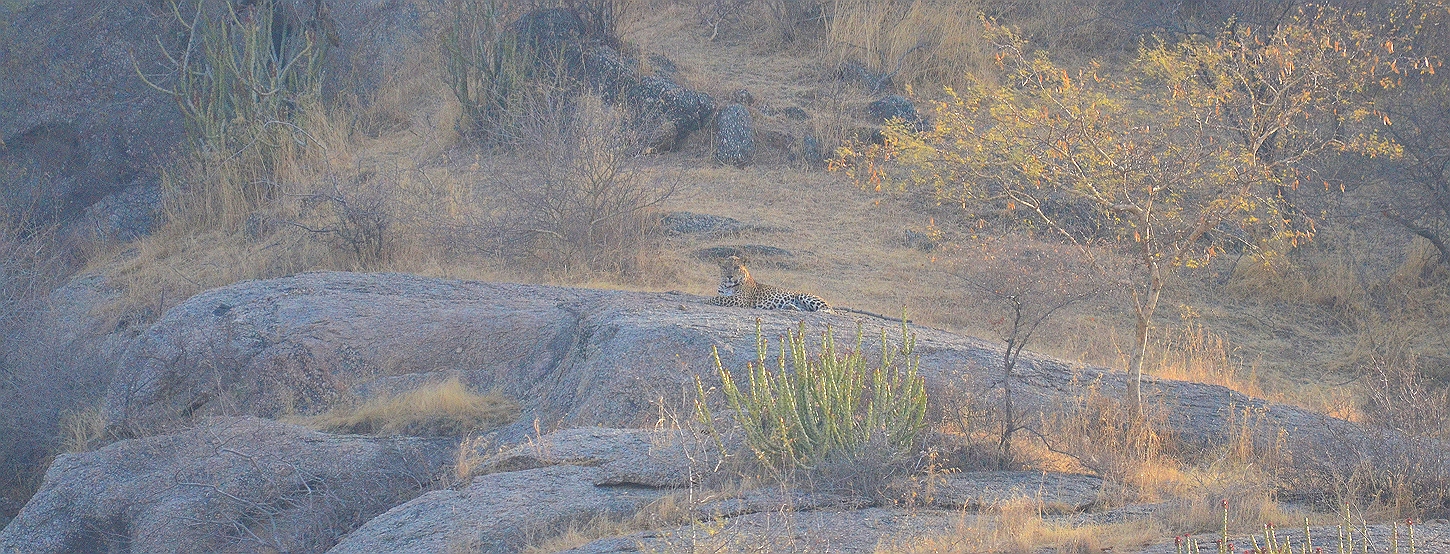
Panna National Park and Ken River Sanctuary are situated 40km from Khahuraho in the Vindhyan hill range. The forests of Panna National Park along with Ken Gharial Wildlife Sanctuary and adjoining territorial divisions form a significant part of the catchment area of the 406 km Ken River which runs northeast for about 72 km through the park.
The undulating open savannah grass and woodlands of the park change their colors throughout the year, creating a rich tapestry of natural beauty. The terrain of the reserve is characterised by extensive plateaus and gorges. The topography can broadly be divided into three distinct tablelands: the upper Talgaon Plateau, the middle Hinouta Plateau and the Ken valley. The vegetation in most Central India National Parks is dry deciduous. The streams and the Ken River flowing from South to North irrigate the park and are seasonal. The ravines in the course of the Ken River are captivating and house several families of vultures. A boat-ride on the beautiful Ken river, on the border of the park is a treat for birding enthusiasts
Translocation of tiger to Panna
The park has gone through a turbulent history in recent time . It was a hot bed of poaching activity over the years and in 2009, the entire tiger population was eliminated by poaching. The Ministry of Environment and Forests (MoEF) approved a proposal to translocate two tigers and two tigresses to the reserve.[12] One female each from Bandhavgarh National Park (coded T1) and Kanha National Park (T2) were translocated to Panna Tiger Reserve. A tiger male, coded T3, was brought from Pench Tiger Reserve, and since then in the last decade through a careful process of relocation from other tiger reserves and natural breeding that the tiger population has climbed back to a healthy 54.
Other Attractions: Leopards, sloth bear, Gharial & birds in winter months.
Park open : October – June
Kabini Basin and Nagarhole National Park
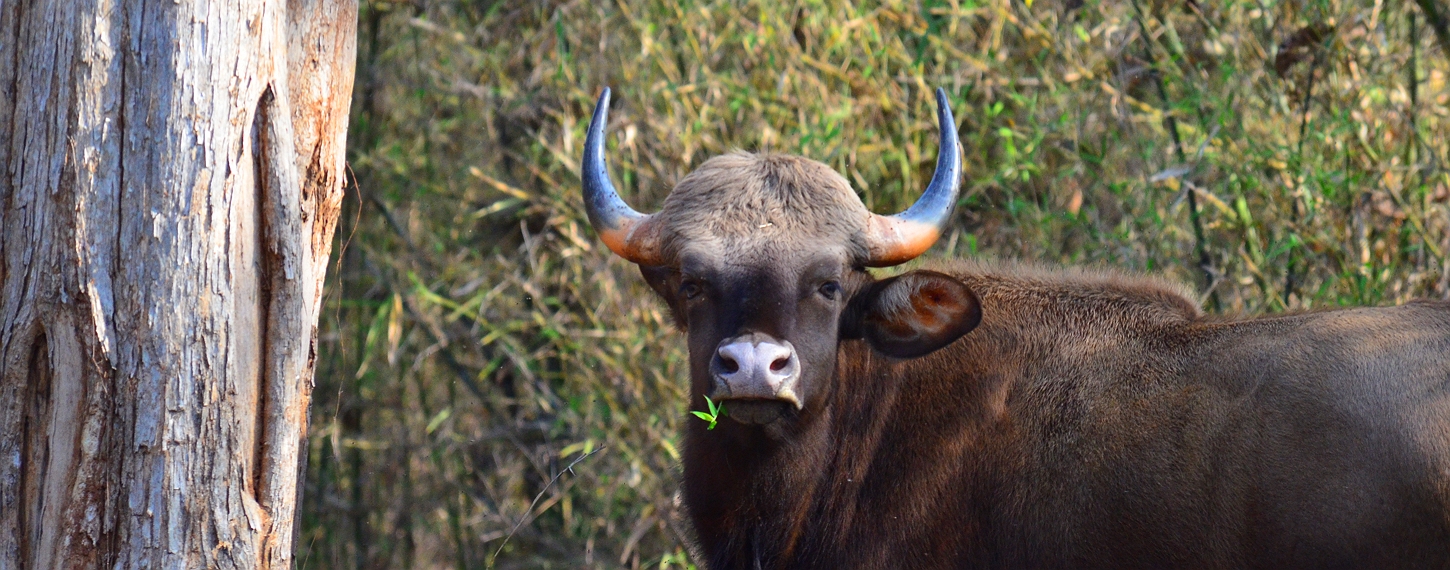
The Kabini River Basin is a unique Wildlife haven. The basin is surrounded on all side by three National Parks and Wildlife Sanctuaries, which have turned it into a spectacular wildlife hotspot.
The Nagarhole National Park is part of the Nilgiri Biosphere. Here the Nagarhole River meets the Kabini river and creates a splendid lake in the midst of the park, which has established a natural boundary between the Nagarhole, Bandipur and Mudumalai National Parks. The Kabini forest reserve forms a great part of the Nagarahole National Park.
The park derives its name from naga, meaning snake and hole, referring to streams. The park was an exclusive hunting reserve of the kings of the Wodeyar dynasty, the former rulers of the Kingdom of Mysore. Initially, Nagarhole was the private hunting ground for the Maharajas of Mysore. Nagarhole was converted into a sanctuary in the year 1955. Nagarhole got National Park status in 1988 and declared as 37th Project Tiger Reserve in 1999.
To the south-east of the park lies the famed Wayanad Wildlife Sanctuary, while to the west, coffee plantations separate the park from Brahmagiri Wildlife Sanctuary.
The park has a healthy predator-prey ratio, with many tigers, Indian bison and elephants and therefore the chances of sighting a tiger in the wild is quite high.
Other attractions : Elephants, Leopards, Gaur (Indian Bison ) and Dhole (Wild Dogs)
Park open : November - April
Kaziranga National Park
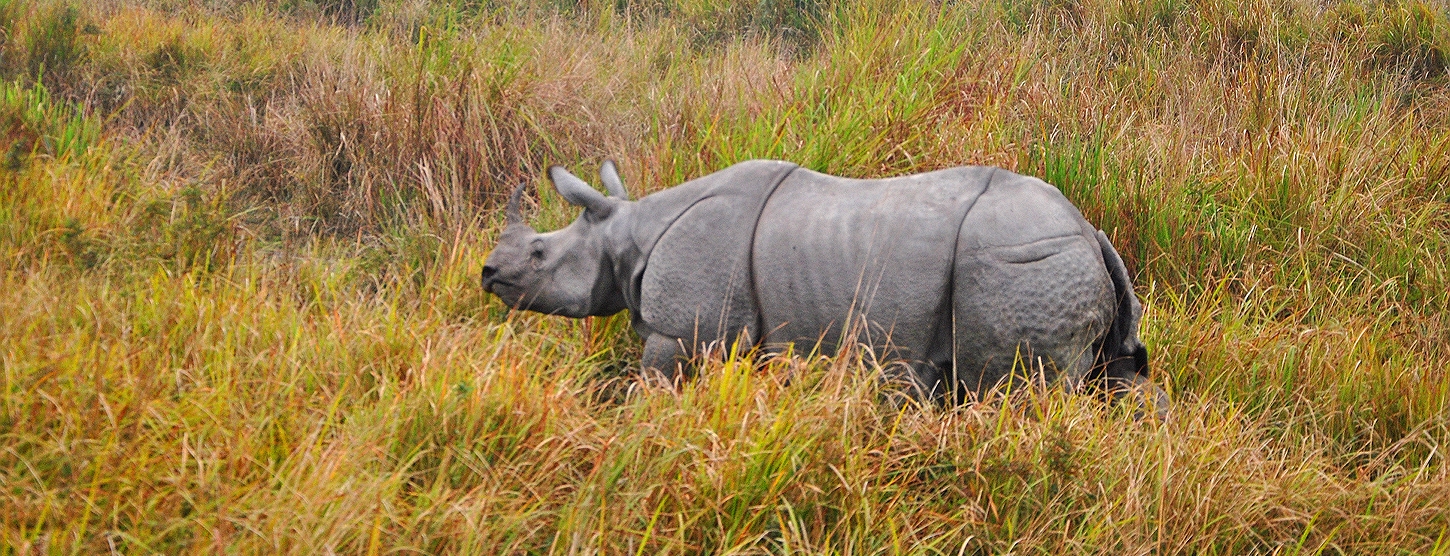
One of the most breathtakingly picturesque wildlife habitats of southern Asia and a UNESCO World Heritage Site, Kaziranga is inhabited by the world's largest population of one-horned rhinoceroses, as well as wild buffaloes, tigers, elephants, swamp deer and thousands of birds.
Kaziranga set on the southern bank of River Brahmaputra in Assam’s Golghat district, is a World Heritage Site and a veritable heaven for wildlife lovers.
Lying at the foot of the Mikir Hills and rising to a height of 1200m, Kaziranga is a stunning biodiversity amalgamation of Wetlands, tall elephant grasslands, forests and riverine habitats fed by the splendid Brahmaputra River. The tall grasses are called 'elephant grass' and grow up to a height of five metres.
The beauty of Kaziranga is best discovered in winter months when the park gets swathed in mist in the early morning. Savouring the beauty of the silent grasslands from the back of a elephant trudging through the grasslands with rhinos, buffaloes and swamp deer, with the first rays of the sun glistening on the dew drops on the blades of grass is an experience like no other. On a safari in a jeep sometimes the rhinos give chase creating an exhilarating moment of adventure that remains in the mind forever.
Kaziranga – How it all started by Lady Curzon
While conservation of One horned Rhinos has been a great success story, Kaziranga was in a precarious condition with dwindling number of rhinos, when Lady Curzon, the wife of Viceroy lord Kurzon visited Assamin 1905.
Lady Curzon went on an elephant safari accompanied by a local naturalist – Nigona. Nigona showed her the footprints of rhinos, but could not show her any. When she asked Nigona, what could be done to save the rhinos, Nigona answered – 'Stop the sahibs from killing them,'
Lady Curzon, on her return to Calcutta, pressed her all-powerful husband to issue orders that would prohibit the hunting of rhinos in Assam.
Other attractions : One Horned Rhino, Elephants, Wild Buffalo, Swamp Deer, Birding
Park open : November - April
Sunderbon National Park
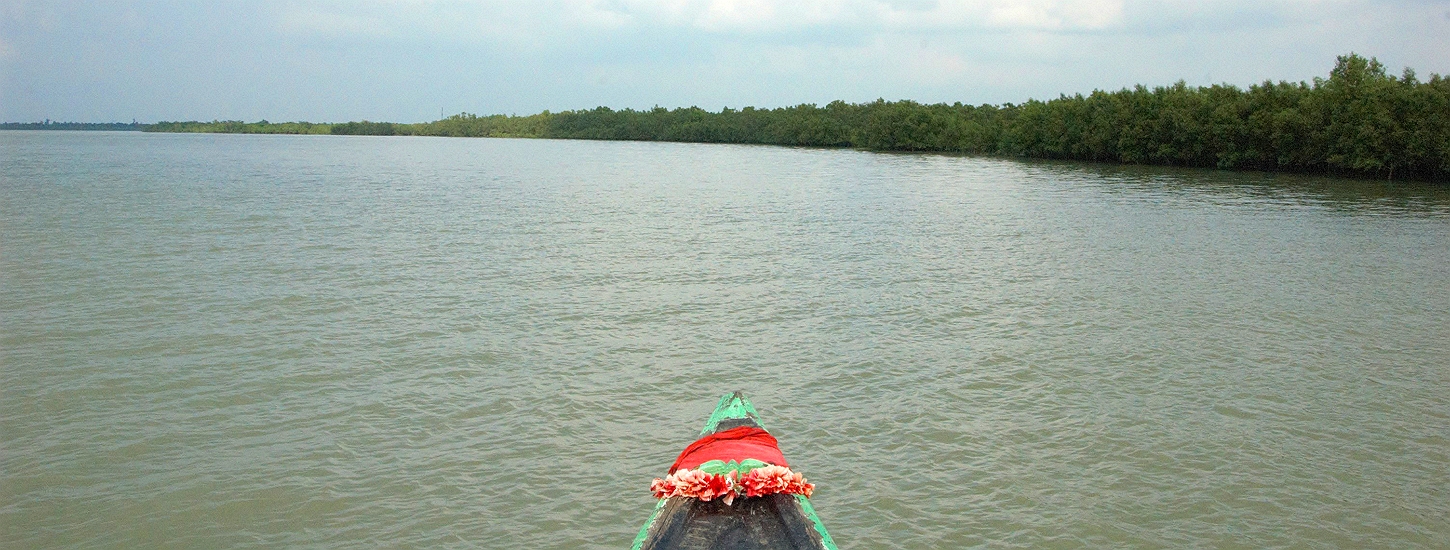
The Sundarbans are mystical and mysterious, dangerous but beautiful. In the morning the region is bright and ‘normal’, but when the setting sun turns it into a faintly glowing, green, pristine land time appears to stand still, and one is charmed and mesmerized.
This delta, which was declared a UNESCO World Heritage Site in 1997, is home to the world’s largest mangrove forest and a natural ecosystem.
The Sunderbans are a dynamic ecosystem of 108 islands interspersed with tidal rivers and narrow creeks. Stretching across more than 10,000km2 in the state of West Bengal and into Bangladesh, this delta is home to the world’s largest mangrove forest and natural ecosystem; it was declared a UNESCO World Heritage Site in 1997. In addition to the unique ecosystem it is also known as the mysterious realm of the endangered and occasionally man-eating Royal Bengal tiger and many amphibians, reptilians, fish and mammals as well as more than 180 bird species.
Godess of the forest and god of the tigers
The area is steeped in mystical tales of Bonobibi (Goddess of the Jungle) and Dakshinrai (God of the Tigers), where folklore, struggle and danger has integrated in the life of the locals; locals living in the villages, engage in dangerous professions like honey collection, catching shrimps in the crocodile rich creeks and rivers.
Other attractions : Mangrove ecosystem, Crocodiles, Birding? Bird Watching?
Park open : Throughout year.
